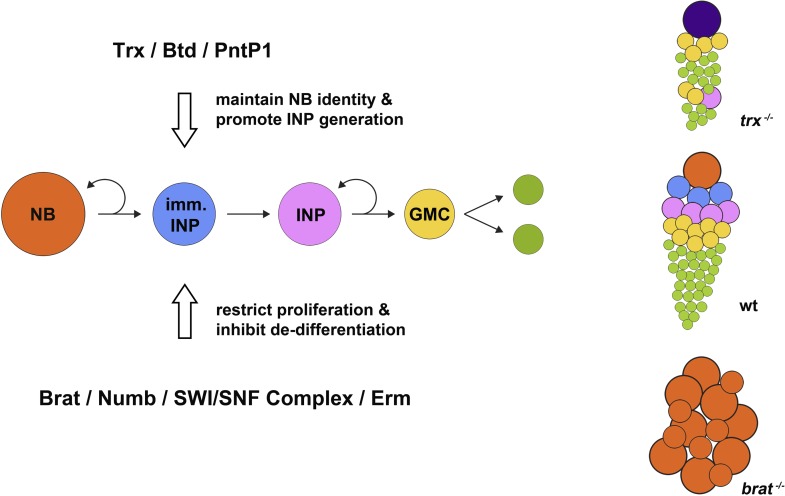Figure 1.
Maintaining neural stem cell identity in the Drosophila brain. A type II neuroblast (NB; orange circles) divides to self-renew and to give rise to an immature intermediate neural progenitor cell (imm. INP; blue circles), which becomes a mature INP (pink) that undergoes several further rounds of self-renewing proliferation. Each round generates a ganglion mother cell (GMC; yellow), each of which gives rise to two differentiated neural cells (green). During neuroblast proliferation, several proteins, including Brat, Numb, SWI/SNF complex, and Erm, restrict the ability of INPs to proliferate and inhibit the de-differentiation of immature INPs. In mutants that lack the brain tumor gene (brat−/−; bottom right), immature INPs revert to neuroblast-like cells that overproliferate and can form brain tumours. On the other hand, as shown by Komori et al. and Xie et al., Trithorax (Trx) and its direct targets Buttonhead (Btd) and Pointed P1 (PntP1) act to maintain the identity of type II neuroblasts and promote the generation of INPs. Hence, in mutants lacking the trithorax gene (trx−/− mutants; top right), INPs are nearly completely lost compared with wild type (wt; centre right), and type II neuroblasts are transformed into type I neuroblasts (purple) that directly generate ganglion mother cells instead of INPs; this ultimately results in fewer neural cells being produced.

